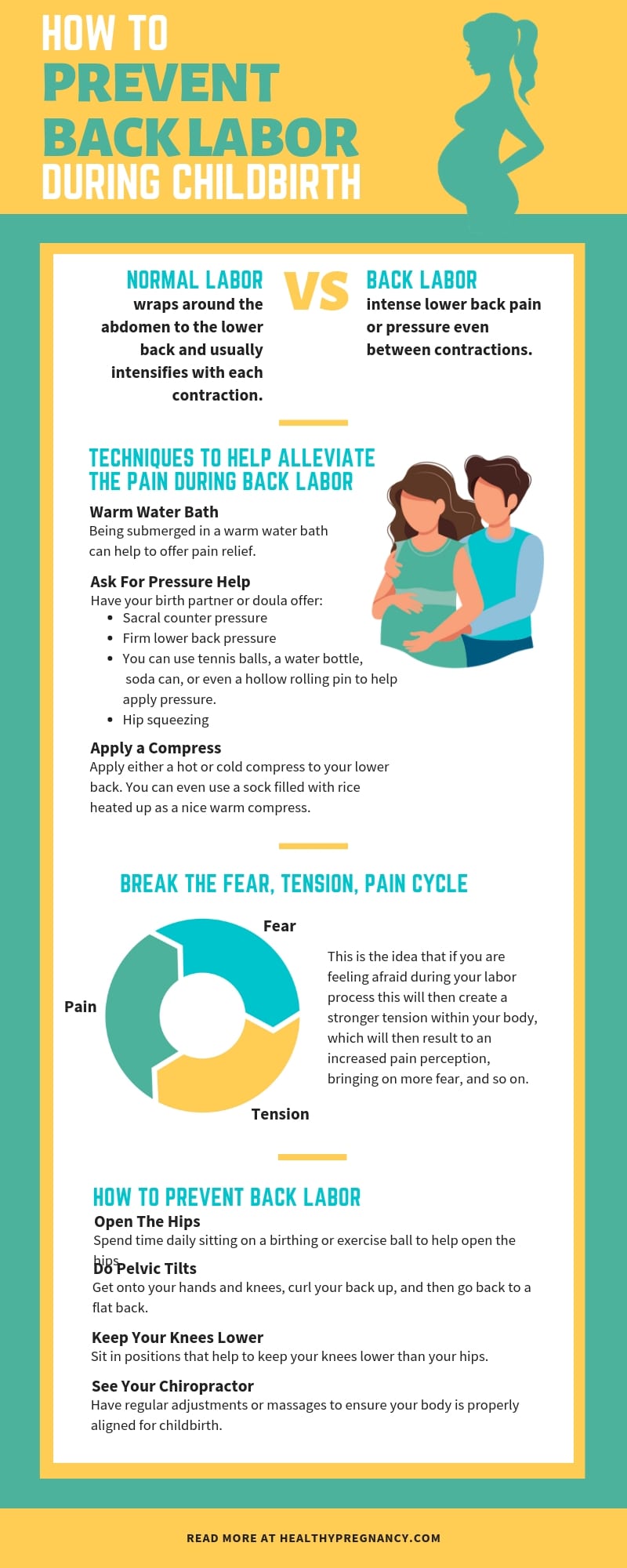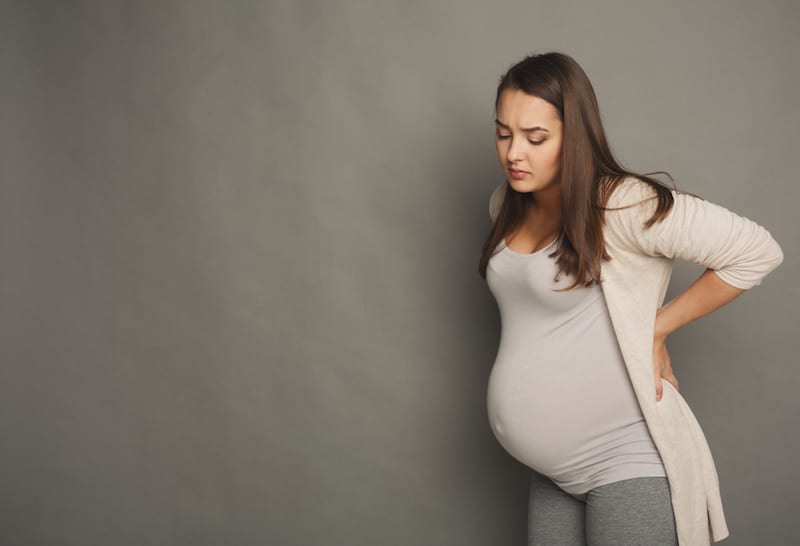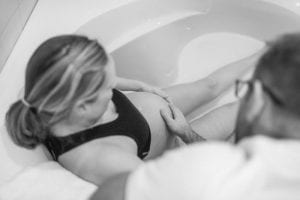
When it comes to childbirth, there are so many questions and what ifs that you will encounter. The best way to look at the unknown that lies ahead of you, is to research and to be informed. One thing that may occur during labor and childbirth is that of back labor.
What is Back Labor?

This is the pain and discomfort that many women can feel within their lower back during labor. While slight cramping and soreness of the back is normal during labor, about 25 percent of women experience severe back discomfort. This is usually most painful during contractions and painful in between them.
Back labor is usually associated with a prolonged labor process, irregular contractions, and a prolonged pushing stage of labor.
A common cause of back labor is the position of the baby within the uterus. Usually this occurs when the baby’s head is facing the mother’s abdomen, the occiput posterior position. This can cause pressure from the head to be applied onto the mother’s tailbone.
However, the baby’s position is not always the case. Some back labor can occur to women who experience back pain during their menstrual cycle regardless of the baby’s position.
Normal Labor vs. Back Labor
Normal contractions during labor will usually wrap around the abdomen to the lower back. Pressure or aching in a woman’s lower back is common during normal labor and usually intensifies even between contractions.
However, with back labor you are more likely to experience intense lower back pain or pressure even between your contractions. Back labor can make you feel even more exhausted than normal labor. This is because you may not get to experience the break in between contractions as you do with normal labor. You may also find yourself feeling as if you do not have the freedom to move about or enough support to help you handle the surges of contractions.
Fear, Tension, Pain Cycle
 There is something known as the fear, tension, pain cycle. This is the idea that if you are feeling afraid during your labor process this will then create a stronger tension within your body, which will then result to an increased pain perception, bringing on more fear, and so on. The cycle is like a circle that does not end.
There is something known as the fear, tension, pain cycle. This is the idea that if you are feeling afraid during your labor process this will then create a stronger tension within your body, which will then result to an increased pain perception, bringing on more fear, and so on. The cycle is like a circle that does not end.
Emotional support is a very important factor to help avoid this cycle from occurring. Having emotional support, such as help with relaxing and encouragement is even more important when experiencing back labor.
By having that support with you during back labor you will experience less pain. Heightened levels of fear is very common during back labor and having someone there to help keep your mind off of the pain or encourage you to keep going will provide a great technique to avoid further tension and fear within the body.
How to Help Alleviate the Pain
 There are a few different techniques that you can try to help alleviate the pain during back labor.
There are a few different techniques that you can try to help alleviate the pain during back labor.
- Warm water bath. Being submerged in a warm water bath can help to offer pain relief.
- Ask for help. Have your birth partner or doula offer the following :
- sacral counter pressure
- Firm lower back pressure
- You can use tennis balls, a water bottle, soda can, or even a hollow rolling pin to help apply pressure.
- Hip squeezing
- Having a doula to help you through labor. A doula is there to offer you support and guidance during labor and childbirth. They can help to keep you calm and offer many suggestions to make the process easier.
- Apply a compress. Apply either a hot or cold compress to your lower back. You can even use a sock filled with rice heated up as a nice warm compress.
Can it be Prevented?
There is no way to know before labor begins if you will experience back labor or not. However, studies have shown that if you have experienced back labor in a previous pregnancy, it is likely that you will experience it again, unless preventative measures are taken.
Try the following tricks during pregnancy to help make sure that baby is in the proper position for childbirth:
- Open those hips. Spend time daily sitting on a birthing ball or exercise ball to help open up your hips and encourage baby to get into position.
- Do pelvic tilts. Get onto your hands and knees, curl your back up, and then go back to a flat back.
- Keep your knees lower. Sit in positions that help to keep your knees lower than your hips throughout the day. However, make sure that you are not sitting all day long!
- See your chiropractor. Have regular adjustments or massages throughout your pregnancy with your chiropractor to help make sure that your body is properly aligned for childbirth.
- Ask your OB. When you go in for your bi-weekly/weekly visits closer to childbirth ask your OB about the position of your baby.
Ways to Help Baby Move During Labor
Try to encourage the baby to get into a better position. You can try to do this by leaning forward in positions such as the rebozo sifting, side lying pelvic floor release, and doing lunges to help encourage baby to flip around the right way.
However, keep in mind that some of these positions may increase the discomfort that you are feeling for a little while. Try and keep calm and have your support team around you during this process to help guide you through it.
Avoid laying on your back. Laying on your back increases the chances of back labor and can make it that much more painful. Try laying on your side or in a tilted position if you must lay down.
Gravity is your friend! Try to walk around, sway, sit on an exercise ball, leaning, or semi- sitting. If you do need to sit down, then try sitting backwards on the toilet or a chair.


